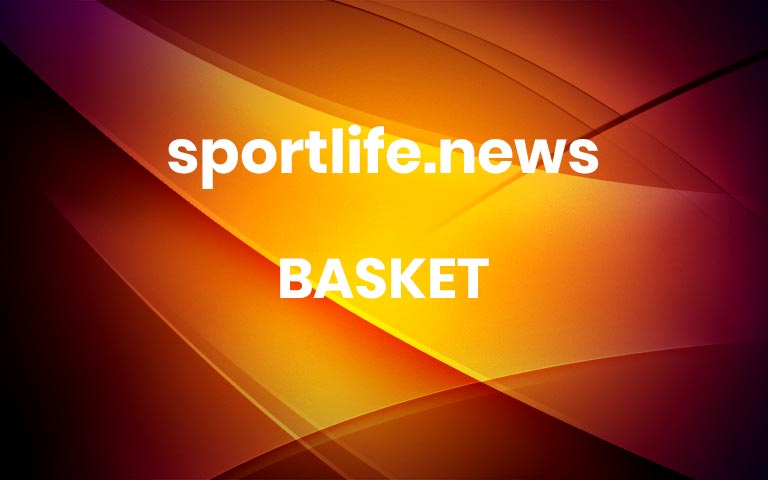#masthead-section-label, #masthead-bar-one { display: none }Race and PolicingFacts on Walter Wallace Jr. CaseFacts on Breonna Taylor CaseFacts on Daniel Prude CaseFacts on George Floyd CaseNaomi Osaka after winning the U.S. Open.Credit…Chang W. Lee/The New York TimesSkip to contentSkip to site indexThe Great ReadHow Putting on a Mask Raised Naomi Osaka’s VoiceShe used her time away from competing during the pandemic to reflect on the world and her place within it. When the time came to speak, she approached it in her own distinct way.Naomi Osaka after winning the U.S. Open.Credit…Chang W. Lee/The New York TimesSupported byContinue reading the main storyDec. 16, 2020, 5:00 a.m. ETAs usual, Naomi Osaka’s postmatch interview struck an emotional chord.It was two years after she had burst to the fore with a moving win over Serena Williams in the 2018 United States Open women’s singles final, where she had stood small and unguarded, crying in front of an audience that had been rooting for her opponent.Now, in September, after winning the U.S. Open for a second time, Osaka was asked by the ESPN analyst Tom Rinaldi to explain why she had entered each of her seven matches wearing a face mask bearing the name of a Black victim of racist violence.“What was the message you wanted to send?” Rinaldi asked Osaka.“Well, what was the message that you got?” she replied. “I feel like the point is to make people start talking.”Her answer, volleyed back at him reflexively, precise and a bit arch, revealed a sharply different woman from the one who had withered under excruciating boos at Arthur Ashe Stadium after her first U.S. Open title.As her star has grown, Osaka has described herself to interviewers as shy and quiet, though her older sister, Mari, likens her to the character Stewie Griffin, from the animated TV show “The Family Guy,” whose malevolent genius is subverted by the constraints of being a baby. That demeanor was sufficient as Osaka navigated the world as an effervescent upstart.When it came to opening up about nearly any deeply felt topic, Osaka used to let the words kink up inside her like an unspooled garden hose. But in 2020, Osaka found her voice and the self-possession to speak up when and how she saw fit, a massive leap for a global superstar who once felt too self-conscious to exhort herself even on the court. With time to engage with civil rights protests because of the pandemic’s pause of tennis, Osaka found the space to unravel her thoughts to convey an urgent and unequivocal demand for change.In doing so, she came to be as precise and efficient in her protest as she has been in her tennis, offering up her version of soft power: deploying bold activism shaped by her unique understanding of the world and her place in it.Osaka eschewed the playbook of other tennis stars.There’s a faction in tennis that has long wanted to hear a more polished version of Osaka.“Forever, whether it was the WTA Tour or other interested parties, everyone was always putting pressure on me to get Naomi media-trained,” Stuart Duguid, her agent, said. “I always thought that would be a mistake for her. That’s the last thing we want to contrive.”After Osaka haltingly riffed through what she called “the worst acceptance speech of all time,” at Indian Wells in March 2018, that push ramped up with executives letting Duguid know they had not been charmed.Osaka posed with the championship trophy at Indian Wells in 2018.Credit…Kevork Djansezian/Getty ImagesStill, he argued that Osaka’s candor made her a star whom fans could connect with. Displaying the mischief and joy of anybody’s teenage sister in her interviews, Osaka racked up deals that proved Duguid right. She rejected prestige for prestige’s sake, bucking the standard luxury watch and car endorsements that mark “making it” in tennis.She instead aligned with brands that made sense for a Gen Z global citizen: She added deals with Sony PlayStation and Airbnb. She took on equity partnerships with performance brands and companies like BodyArmor SportWater and Hyperice, and started fashion collaborations with Comme des Garçons and Adeam, labels coveted not at country clubs but on street style roundups.The haul beefed up her 2019 earnings to $37 million, a figure Forbes estimated was the most any woman had earned as an athlete in one year.In what she termed “a U-shaped” 2019, though, Osaka’s rawness and honesty conveyed the depths of her frustration over how much she struggled after her rapid-fire Grand Slam wins. After a 16-match win streak at Grand Slam events, she was upset at the 2019 French Open in her third match and lost in a first-round stunner at Wimbledon. After Wimbledon, she faced reporters who presented her with variations of the same question — what’s wrong with you?“There’s answers to questions that you guys ask that I still haven’t figured out yet,” she curtly replied to one, during a news conference she left by telling a moderator, “I feel like I’m about to cry.”It was a troublesome showing — her postmatch interviews felt like eavesdropping on a doctor’s stethoscope. She offered only sadness and frustration, with no spin.The year mercifully ended with Osaka’s hiring a new coach, Wim Fissette, an analytics-minded Belgian who had worked with other No. 1s, Simona Halep, Kim Clijsters and, most recently, Victoria Azarenka.When she was ousted in the round of 32 at the Australian Open, Fissette and Osaka pried open a vein of communication. To that point, they had developed a polite repartee about the technical parts of her game, but stopped short of talking about her mind-set entering matches.“She’s not a person that you get to know and she tells you everything you need to know,” Fissette said.Osaka revealed in a come-to-Jesus conversation weeks after the loss that she had told him things were just fine when they weren’t. She had assumed an extreme amount of pressure to win in Australia and wasn’t mentally ready to deal with a match that didn’t go her way. Osaka agreed to open up, realizing that sharing her feelings did not challenge her normal confidence in her game and in her physicality.“I don’t necessarily need that much in terms of strategy, and I feel like my game is always good enough to win,” she said in an email interview in November. “But of course you can’t play your A game every day, so it’s nice to know that I have some information on my opponent in case I need it. That definitely helps to relax me going into matches.”‘I was able to take more personal time.’Of course, her tennis wasn’t tested much in the months that followed because the pandemic shut down the WTA Tour in mid-March along with the rest of major sports leagues. Osaka used the downtime to consider the world from her vantage point. “I was able to focus on things outside of tennis and live my life outside of tennis in a way I never have and likely never will again,” she said. “I was able to take more personal time, more time for self-reflection, more time to understand and witness the world around me.”Tendrils of info on how she spent those months and how they changed her have seeped into her social media accounts where, between family dance-offs, she posted images of Frantz Fanon’s book “The Wretched of the Earth” and appeared with her boyfriend, the rapper Cordae Dunston, on workout bikes in a picture snapped by Colin Kaepernick. Amid Netflix binges and at-home workouts, and learning to cook her favorite of her mother Tamaki’s recipes, Osaka spent time reading about how Haiti became the first Black-led republic in the world. That was a suggestion from Leonard Francois, her father, to learn about her ancestors.Without the tunnel vision of a tennis schedule, Osaka showed the effects of the psyche-scarring onslaught of violence against Black Americans. In the days after George Floyd was killed by the Minneapolis police in May, she flew with Dunston to protests there and later wrote an opinion piece for Esquire challenging that society “take on systemic racism head-on, that the police protect us and don’t kill us.”Though Osaka’s assertion of each part of her identity — Japanese, Haitian, raised for a time in the United States — has given her profitable endorsement lanes, she has often highlighted her Blackness when commentators minimize it. That erasure has happened in small ways, as when a TV interviewer after a 2019 Australian Open match gave a shout-out to her Japanese supporters there. She thanked them, then gave “big ups” to Haiti.Her Blackness has been overlooked in more troubling circumstances, too.After the 2018 Open win, an Australian newspaper cartoon depicted the final scene with Williams in racist caricature — mammy-esque facial features frozen in twisted rage — which the artist defended against backlash by saying, “I drew her as an African-American woman.” Nearly lost in the controversy was his rendering of Osaka: pale, with blond, straight hair and nearly unrecognizable. In 2019, her sponsor Nissin pulled an ad in which a cartoon of Osaka had skin and hair many shades lighter than she had in real life.Serena Williams and Naomi Osaka after the 2018 U.S. Open final.Credit…Chang W. Lee/The New York TimesThat same year, a Japanese comedy duo said Osaka needed “some bleach” and was “too sunburned,” remarks for which they later apologized without naming Osaka specifically.With Osaka cut off from IRL social touchstones and without access to her day job, her TikTok, Instagram, Facebook, Twitter and other platforms provided the most candid way for her to speak up as she had pledged. When she tweeted her support for the Black Lives Matter movement in June and encouraged participation in a B.L.M. protest in Osaka, Japan, she faced social media trolls who called her a terrorist and a widespread backlash from Japanese people who viewed the issue as an outsider’s cause.“I think for people in America, the B.L.M. movement is something we have all started to talk about and talk about openly,” Osaka said, “yet globally, it’s not as common, and I hope that changed.”The cultural anthropologist John G. Russell sees Osaka’s emergence in Japan as a significant stride given the country’s long history of touting its monoculture, but one that has opened her and her sponsors up to racist vitriol from some people who view mixed-race Japanese figures as a threat to the national identity.The notoriously savage Twitter user Yu Darvish, a Major League Baseball pitcher who is Japanese and Iranian, and the N.B.A. star Rui Hachimura (Japanese and Beninese) have also used their platforms to clap back and to promote social justice.“They are stepping up to address issues that the Japanese media would prefer not to confront,” Russell said in an email interview, cautioning that though their efforts have increased visibility in Japan, their message “may serve to reinforce the view that hafu are themselves outsiders and not full members of Japanese society.” (“Hafu” is a term used for Japanese people of mixed-race backgrounds.)When tennis returned, Osaka put her protest front and center.The day before Osaka played her first match at the Western & Southern Open in August, Jacob Blake was shot in the back by the police in Kenosha, Wis.By her quarterfinal match, renewed protests had reached American pro sports, with teams in the N.B.A., the W.N.B.A. and M.L.B. opting to stop competing on Aug. 26.Osaka came off the court that day planning to withdraw from the tournament. No call with a players’ union, no team meeting. Duguid, her agent, asked her to hold off announcing for 10 minutes or so while he scrambled to give her sponsors and the tournament a heads-up. That done, she dropped a meticulously framed statement to her various social feeds that explained her stance.“Before I am an athlete, I am a black woman,” she wrote. “And as a black woman I feel as though there are much more important matters at hand that need immediate attention, rather than watching me play tennis.”Officials paused the Western & Southern Open rather than have Osaka withdraw from it to protest the police shooting of Jacob Blake. She finished as runner-up, after an injury caused her to pull out of the final.Credit…Jason Szenes/EPA, via ShutterstockWithin minutes, the WTA’s chief executive, Steve Simon, called Duguid to salvage her participation. Simon, along with other tennis and tournament officials, eventually agreed to pause the tournament.“I have never, ever experienced the quickness and the united front for these leaders to come together on what was a very, very critical moment,” Stacey Allaster, the tournament director for the U.S. Open, said.It was an unmistakable display of Osaka’s power within the sport, an authority that is still heavily predicated upon winning.As she entered the U.S. Open, so much had changed for her personally and in the world. Fissette said no player he had coached carried Osaka’s glee and determination entering a Grand Slam event. With a strong showing at the Western & Southern (she advanced to the final, but then withdrew with an injury), a more open relationship with her team and a new expectation that her matches might get tough, she came into the U.S. Open confident enough to have seven face masks made — one for each round needed to win a championship.“I wouldn’t travel to a tournament without expecting to play seven matches, and initially, when I thought about the best way to raise awareness and honor voices that had been silenced, it was more something I had to do on a personal level, for myself,” Osaka said. “I didn’t feel that with all that I was seeing in the world around me I could just show up and play as if nothing had happened, as if lives were not unjustly taken.”As she bounded into Ashe Stadium on Sept. 1 for her opening match, a plume of hair and a bulky headphone tiara framed her mask bearing the name Breonna Taylor, the 26-year-old medical worker who was killed in March during a raid of her apartment in Louisville, Ky.Cheryl Cooky, a sociology professor at Purdue who studies gender and sexuality, saw the quiet but impossible-to-ignore protest as contributing powerfully to the iconography of athlete activism.Collectively, she said, we tend to remember the visual shorthand of John Carlos and Tommie Smith’s gloved black fists at the 1968 Olympics, or Kaepernick’s kneeling, rather than women who have been at the vanguard of protest movements. Women like Ariyana Smith, the Knox College basketball player who in 2014 foreshadowed future demonstrations in college and pro sports by protesting the killing of Michael Brown by the police in Ferguson, Mo.“The protests that are happening in the sports space are by Black women athletes, but it’s the men who become these iconic figures,” said Cooky, co-author of “No Slam Dunk: Gender, Sport and the Unevenness of Social Change.” Osaka’s protest, she said, was visible enough to stand alongside the most memorable acts.Osaka wore a mask in honor of Breonna Taylor as she celebrated defeating Misaki Doi in the first round of the U.S. Open.Credit…Frank Franklin/Associated PressThe imagery focused a laser beam of attention on Osaka during the most arduous tournament this year, during which she could not have her normal squad of family members and friends on hand for a postmatch hug. Still, positive reactions wormed their way into the Open bubble.The Greek player Stefanos Tsitsipas, who had texted Osaka after both tours paused in August and asked her to explain to him the Black Lives Matter movement, watched matches at the Open while wearing a B.L.M. T-shirt. Osaka regularly found earnest messages from fans all over the world on her social feeds. In an interview on ESPN, she was shown a video in which the families of Ahmaud Arbery and Tamir Rice thanked her for remembering their loved ones.“Once I saw that so many people were talking, those seven masks acted as more of an inspiration for me than added pressure,” Osaka said. “I am not really one to lose composure, but that moment left me speechless and quite emotional.”By now we know how that tournament turned out, how Osaka rallied from down a set and a break to defeat Azarenka, and then the retort to Rinaldi. The triumph left her “completely exhausted — physically and mentally,” and she declined a daytime talk show blitz as an encore.Instead, she wrapped herself the next day in what resembled a shortened version of a karabela dress, a traditional Haitian dress for celebrations, and a head wrap for her official champions portrait. Later, she and her family went to Haiti to reconnect with the past, a trip that she called “an amazing and emotional experience to cherish.”Now, two months removed from her victory and with the year coming to a close, Osaka still cannot give voice to the specifics of how her life, career and goals have changed. “I think that’s something that I won’t have a firm answer to for a while,” she said.When she does, she’ll let us know.AdvertisementContinue reading the main story More






